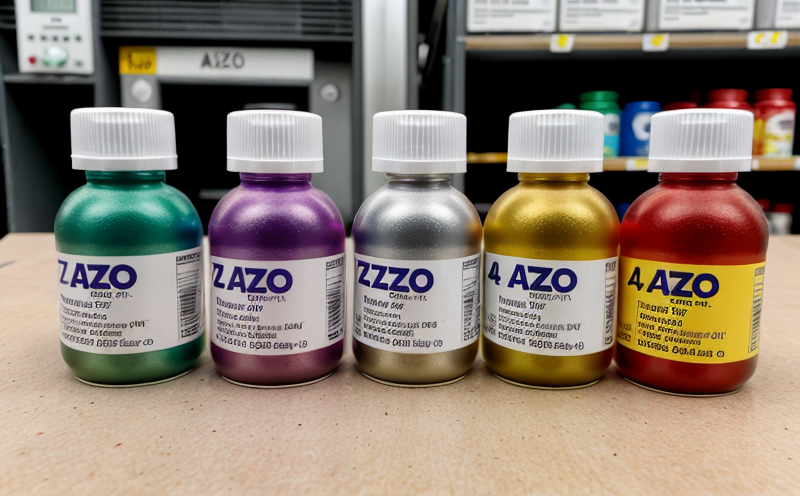Textile Pilling Resistance Martindale Test
The Martindale pilling resistance test is a critical procedure used in the textile industry to evaluate the durability of fabrics against the formation of pills, which are small, spherical masses that form on the surface of textiles when they rub together. This test is particularly important for ensuring fabric quality and consumer satisfaction in sectors such as fashion, home furnishings, and automotive interiors.
The Martindale pilling resistance test simulates real-world wear conditions by exposing a sample to friction between two surfaces. The friction causes the fibers to break down, leading to the formation of pills if the fabric is not robust enough. This test helps manufacturers identify which fabrics are prone to pilling and can guide them in selecting materials that will withstand frequent use without degrading.
The Martindale machine consists of a rotating drum that houses the textile sample and two rubbing plates. The specimen is positioned between these plates, and the machine rotates the drum back and forth, creating friction between the fabric layers. The number of cycles required to produce 5 pills determines the pilling resistance value (PRV) of the fabric.
For accurate testing, it’s crucial that both the specimen preparation and testing procedure adhere strictly to industry standards. According to ISO 12947-2:2013, the test specimens should be cut from the warp or weft direction, depending on the orientation of the pilling. The samples must also be conditioned according to ASTM D3578, ensuring they are at a specific humidity and temperature before testing.
The Martindale pilling resistance test is not just about meeting aesthetic standards; it’s vital for maintaining brand reputation and customer trust. Consumers expect fabrics that last longer, especially in high-wear areas like the sleeves of shirts or the seat backs of car seats. By incorporating this test into their quality control processes, textile manufacturers can ensure they deliver products that meet these expectations.
Understanding the Martindale pilling resistance test also involves grasping its broader significance within the industry. Compliance with international standards is essential for global trade and market access. For instance, ISO 12947-2:2013 ensures uniformity in testing methods across different regions, which helps in standardizing quality assurance practices.
Furthermore, the test results can influence design choices. If a fabric consistently fails to meet pilling resistance standards, designers may need to explore alternative materials or modify their current designs to enhance durability without compromising on style.
- Automotive interiors
- Fashion apparel
- Hospital garments
- Outdoor gear
In conclusion, the Martindale pilling resistance test is a cornerstone of textile quality assurance. It helps manufacturers ensure their products meet high standards and can withstand the rigors of daily use.
Why It Matters
The importance of the Martindale pilling resistance test cannot be overstated in the textile industry. Consumers expect fabrics that are durable, aesthetically pleasing, and long-lasting. Pilling can lead to an unsightly appearance and reduce fabric life, leading to customer dissatisfaction and potential returns.
From a compliance perspective, adherence to standards like ISO 12947-2:2013 ensures that products meet international quality benchmarks, which is crucial for exporting goods internationally. Meeting these standards can also prevent costly recalls or legal issues arising from product failures in the market.
Moreover, the test plays a pivotal role in innovation and design. By identifying fabrics prone to pilling, manufacturers can focus their research and development efforts on improving fabric properties. This not only enhances product quality but also opens up new possibilities for creating more sustainable textiles that are both durable and eco-friendly.
The Martindale test is particularly important for high-wear areas in clothing such as the cuffs of shirts or the seat backs of car seats, where pilling can significantly affect customer satisfaction. In these contexts, ensuring good pilling resistance is not just a technical requirement but also a marketing advantage.
Benefits
The Martindale pilling resistance test offers numerous benefits to manufacturers and consumers alike. For manufacturers, it provides critical insights into fabric performance, helping them make informed decisions about material selection and design modifications. This can lead to the development of more durable products that meet both functional and aesthetic expectations.
Consumers benefit from fabrics that are not only attractive but also long-lasting. The Martindale test ensures that textiles retain their original appearance and functionality for longer, contributing to overall customer satisfaction and loyalty.
The test also contributes to sustainability efforts by encouraging the use of high-quality materials that can withstand frequent wear and tear without compromising on environmental impact. By reducing waste and extending product life cycles, textile manufacturers play a crucial role in promoting sustainable practices within the industry.
From an economic perspective, meeting pilling resistance standards can enhance brand reputation and market competitiveness. Brands known for delivering high-quality products with excellent durability are more likely to attract repeat customers and positive reviews.
Industry Applications
Automotive interiors: Ensuring the longevity of fabrics used in car seats is crucial for both comfort and safety. The Martindale test helps manufacturers select materials that can withstand daily friction without developing pills, enhancing passenger experience.
Fashion apparel: In the fast-paced fashion industry, durability is a key factor. By using this test, designers can choose fabrics that maintain their appeal over time, ensuring customer satisfaction and brand loyalty.
Hospital garments: The Martindale test helps in selecting textiles for hospital use that are both hygienic and durable, contributing to patient safety and comfort.
Outdoor gear: For outdoor enthusiasts, the durability of clothing is paramount. This test ensures that fabrics used in tents, jackets, and other outdoor apparel can withstand harsh weather conditions without degrading quickly.
The Martindale pilling resistance test is a vital tool for manufacturers across these sectors, helping them produce textiles that are both functional and aesthetically pleasing.





